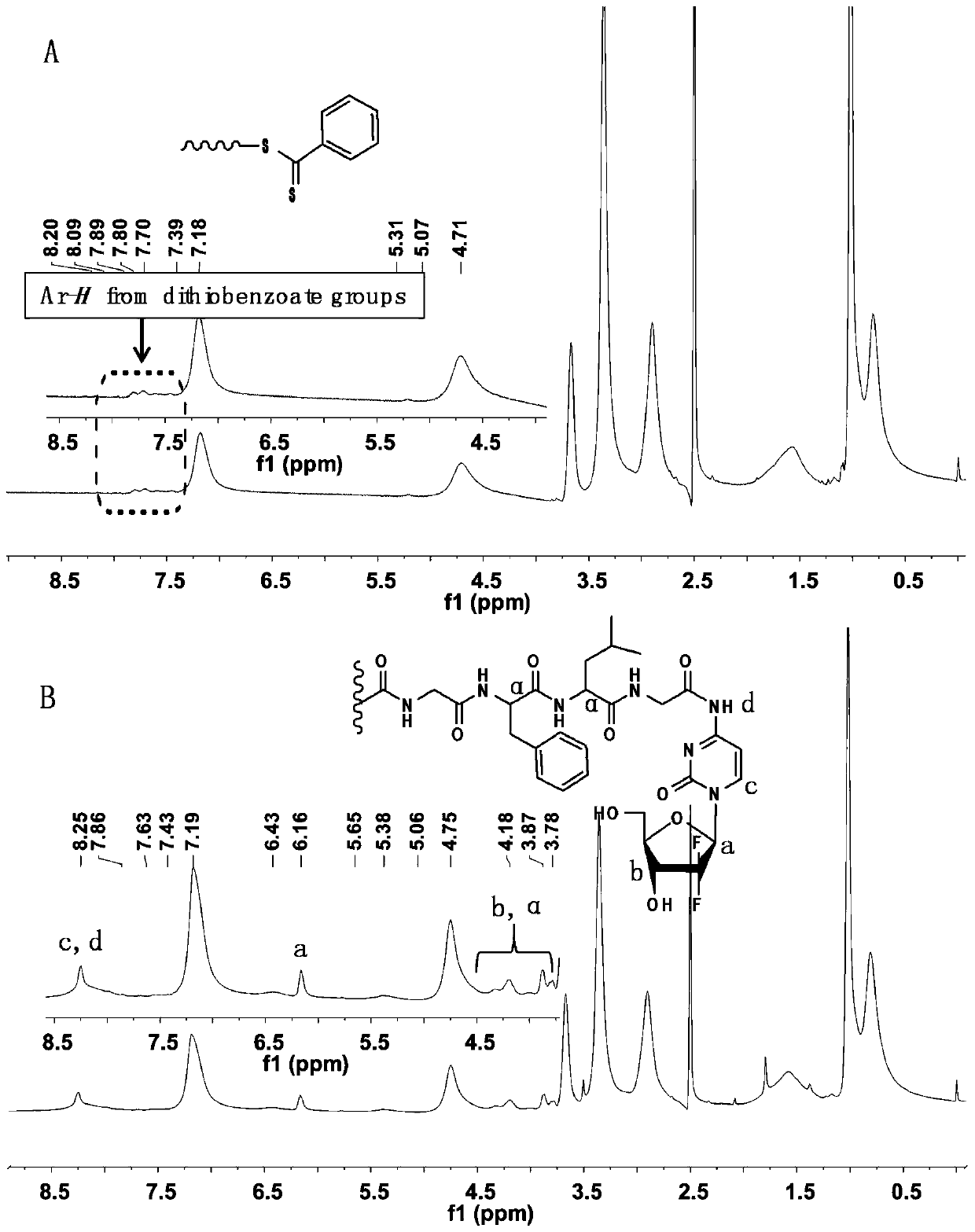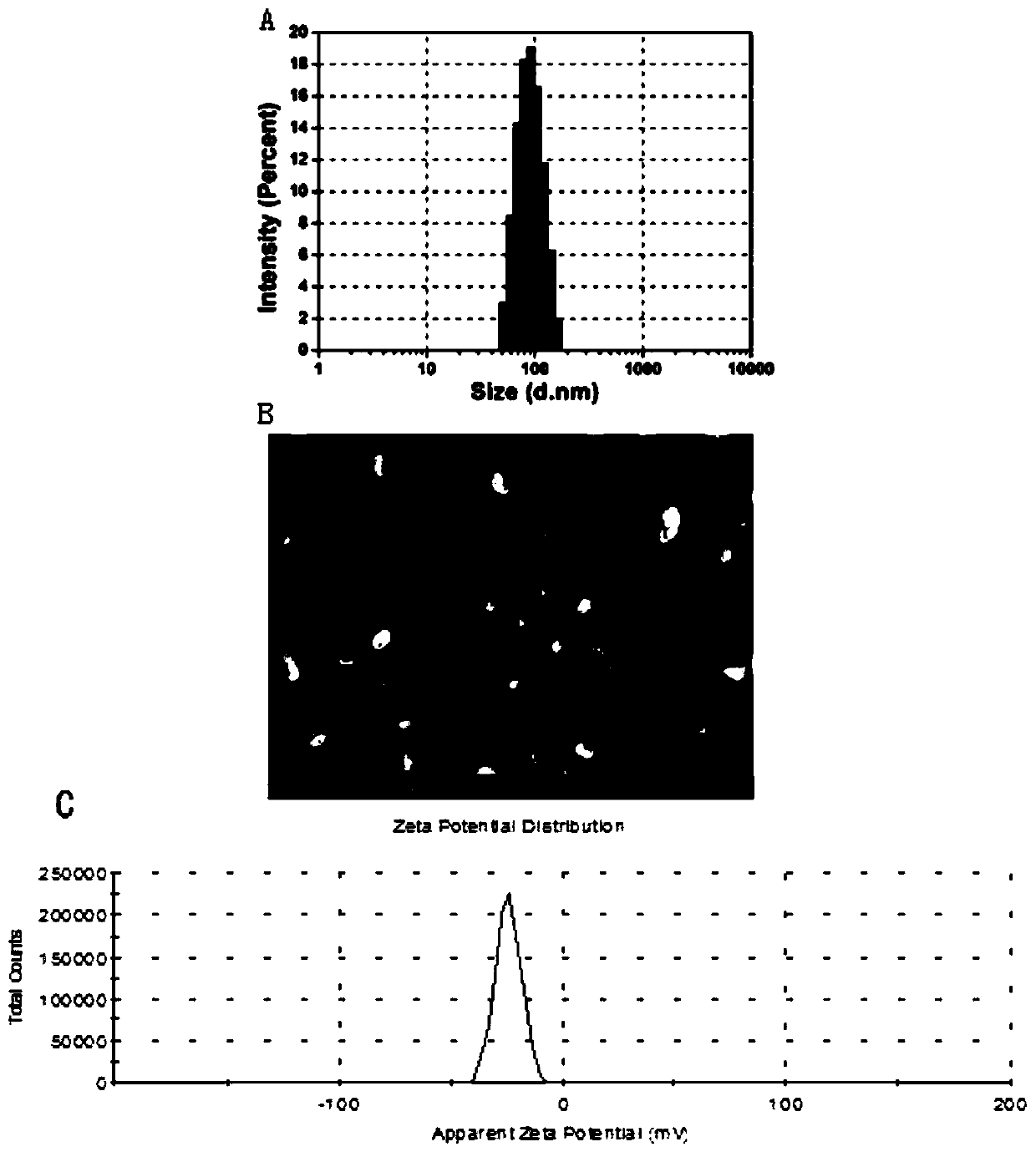Degradable amphiphilic block hpma polymer drug delivery system stimulated by tumor microenvironment and preparation method thereof
An amphiphilic block and tumor microenvironment technology, applied in the field of amphiphilic block HPMA polymer drug delivery system, can solve problems such as unfavorable industrial scale-up, cumbersome purification process, etc., to maintain stability, effective aggregation, good resistance Tumor efficacy and biosafety efficacy
- Summary
- Abstract
- Description
- Claims
- Application Information
AI Technical Summary
Problems solved by technology
Method used
Image
Examples
Embodiment 1
[0062] The tumor microenvironment stimulates the degradable amphiphilic block HPMA polymer drug delivery system. The drug delivery system is a conjugate of HPMA polymer, cathepsin B substrate GFLG and small molecule drug gemcitabine. The specific structure is as follows:
[0063]
[0064] Where: m=0-4;
[0065] n=270-320;
[0066] o=5-12;
[0067]
Embodiment 2
[0069] This embodiment is on the basis of embodiment 1:
[0070] The average degree of polymerization of the drug delivery system is m=0, n=260, o=5.
[0071] The average molecular weight of the drug delivery system is 80KDa.
Embodiment 3
[0073] This embodiment is on the basis of embodiment 1:
[0074] R: -N 3 .
[0075] The average degree of polymerization of the drug delivery system is m=0.4, n=280, o=7.
[0076] The average molecular weight of the drug delivery system is 90KDa.
PUM
| Property | Measurement | Unit |
|---|---|---|
| molecular weight | aaaaa | aaaaa |
| molecular weight | aaaaa | aaaaa |
| molecular weight | aaaaa | aaaaa |
Abstract
Description
Claims
Application Information
 Login to View More
Login to View More - R&D
- Intellectual Property
- Life Sciences
- Materials
- Tech Scout
- Unparalleled Data Quality
- Higher Quality Content
- 60% Fewer Hallucinations
Browse by: Latest US Patents, China's latest patents, Technical Efficacy Thesaurus, Application Domain, Technology Topic, Popular Technical Reports.
© 2025 PatSnap. All rights reserved.Legal|Privacy policy|Modern Slavery Act Transparency Statement|Sitemap|About US| Contact US: help@patsnap.com



